-
 Bitcoin
Bitcoin $76,479.4701
-3.52% -
 Ethereum
Ethereum $1,469.1142
-5.46% -
 Tether USDt
Tether USDt $0.9993
-0.03% -
 XRP
XRP $1.7902
-4.83% -
 BNB
BNB $551.0674
-0.78% -
 USDC
USDC $1.0003
0.02% -
 Solana
Solana $105.4201
-1.56% -
 TRON
TRON $0.2301
0.50% -
 Dogecoin
Dogecoin $0.1423
-4.38% -
 Cardano
Cardano $0.5589
-4.51% -
 UNUS SED LEO
UNUS SED LEO $9.0173
0.56% -
 Toncoin
Toncoin $3.0027
-2.56% -
 Chainlink
Chainlink $10.9146
-4.73% -
 Stellar
Stellar $0.2207
-4.45% -
 Avalanche
Avalanche $16.1527
-4.24% -
 Shiba Inu
Shiba Inu $0.0...01066
-6.81% -
 Sui
Sui $1.9318
-3.99% -
 Hedera
Hedera $0.1462
-4.08% -
 MANTRA
MANTRA $6.2098
-1.18% -
 Dai
Dai $1.0001
0.01% -
 Bitcoin Cash
Bitcoin Cash $268.3547
-2.84% -
 Polkadot
Polkadot $3.3678
-6.32% -
 Litecoin
Litecoin $69.1437
-2.09% -
 Ethena USDe
Ethena USDe $0.9986
-0.03% -
 Bitget Token
Bitget Token $3.9888
-4.59% -
 Hyperliquid
Hyperliquid $11.6557
0.72% -
 Pi
Pi $0.5672
-1.97% -
 Monero
Monero $196.0247
-4.01% -
 OKB
OKB $51.1597
0.14% -
 Uniswap
Uniswap $4.7818
-6.32%
How can mining equipment improve revenue?
Optimize mining equipment by choosing efficient hardware, enhancing energy use, scaling operations, and staying updated on market trends to boost cryptocurrency mining revenue.
Apr 07, 2025 at 05:21 am
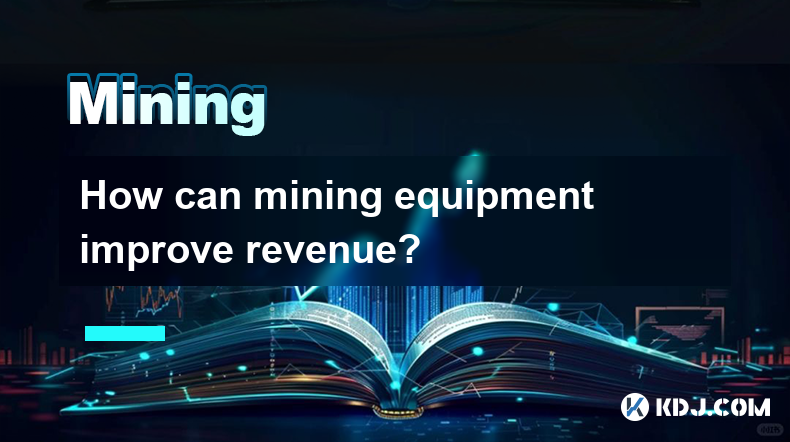
Mining equipment plays a crucial role in the cryptocurrency ecosystem, particularly in the process of mining new coins and validating transactions on blockchain networks. As the demand for cryptocurrencies continues to grow, miners are constantly seeking ways to enhance their operations and improve their revenue streams. In this article, we will explore the various ways in which mining equipment can be optimized to increase profitability and efficiency in the competitive world of cryptocurrency mining.
Choosing the Right Mining Hardware
Selecting the appropriate mining hardware is the first step towards improving revenue. Different cryptocurrencies require different types of mining equipment, and the choice of hardware can significantly impact the overall profitability of a mining operation.
ASIC miners are specifically designed for mining certain cryptocurrencies like Bitcoin and are known for their high hashing power and energy efficiency. They are the most suitable choice for miners focusing on these specific coins.
GPU miners are more versatile and can mine a broader range of cryptocurrencies. They are often used for mining altcoins and can be a good option for miners looking to diversify their portfolio.
CPU miners are less common in today's mining landscape due to their lower efficiency and hashing power. They are typically used for mining less competitive cryptocurrencies or for educational purposes.
Optimizing Energy Efficiency
Energy costs are one of the most significant expenses for miners, and optimizing energy efficiency can directly impact revenue.
Investing in energy-efficient mining rigs can help reduce electricity consumption. Modern ASIC miners, for example, are designed to be more energy-efficient than their predecessors.
Using renewable energy sources such as solar or wind power can significantly lower operational costs and improve the environmental footprint of mining operations.
Implementing proper cooling systems is crucial for maintaining the performance and longevity of mining equipment. Efficient cooling can prevent overheating, which can lead to reduced efficiency and potential hardware damage.
Scaling Operations
As the cryptocurrency market evolves, scaling mining operations can be an effective way to increase revenue.
Expanding the number of mining rigs can lead to higher hashing power and, consequently, more mined coins. However, miners must carefully consider the additional energy costs and potential returns before scaling up.
Joining mining pools can help smaller miners increase their chances of earning rewards. By pooling resources with other miners, participants can share the rewards more consistently, even if the individual mining power is relatively low.
Diversifying mining operations across different cryptocurrencies can mitigate risk and potentially increase overall revenue. Miners can take advantage of fluctuations in different cryptocurrency markets to maximize their earnings.
Regular Maintenance and Upgrades
Maintaining and upgrading mining equipment is essential for ensuring optimal performance and maximizing revenue.
Regular cleaning and maintenance of mining rigs can prevent dust buildup and ensure that the equipment operates at peak efficiency. This can help extend the lifespan of the hardware and maintain consistent performance.
Upgrading firmware and software can improve the efficiency and functionality of mining equipment. Manufacturers often release updates that can enhance performance and security, so staying up-to-date is crucial.
Replacing outdated hardware with newer, more efficient models can significantly boost mining performance. As technology advances, newer mining rigs can offer better hashing power and energy efficiency, leading to higher revenue potential.
Strategic Mining Pool Selection
Choosing the right mining pool can also impact revenue. Mining pools allow miners to combine their resources and share the rewards, which can be particularly beneficial for smaller miners.
Assessing pool fees and payout structures is essential. Some pools charge higher fees but offer more consistent payouts, while others may have lower fees but less frequent rewards.
Considering pool size and reliability can influence the decision. Larger pools may offer more consistent rewards but can also be more competitive, while smaller pools might provide higher individual rewards but with less frequency.
Evaluating the pool's reputation and history can help miners avoid scams and ensure that they are joining a trustworthy operation. Researching user reviews and the pool's track record can provide valuable insights.
Leveraging Advanced Mining Software
Using advanced mining software can optimize the mining process and improve revenue.
Mining software with automatic profit switching can help miners maximize their earnings by automatically switching between different cryptocurrencies based on profitability. This can be particularly useful for miners mining multiple coins.
Software with detailed performance monitoring allows miners to track the efficiency and health of their mining rigs. This can help identify potential issues before they impact performance and revenue.
Utilizing software with remote management capabilities can streamline operations and reduce downtime. Miners can monitor and manage their rigs from anywhere, ensuring that they are always running at optimal efficiency.
Staying Informed About Market Trends
Keeping up with market trends and cryptocurrency news can help miners make informed decisions that impact their revenue.
Monitoring cryptocurrency prices and difficulty levels can help miners adjust their strategies to maximize profits. For example, miners might choose to focus on coins with lower difficulty levels and higher profitability.
Staying updated on upcoming hard forks and network upgrades can provide opportunities for miners to prepare and potentially benefit from changes in the network. Some hard forks can lead to new coins being created, which miners can mine and sell for profit.
Following industry news and developments can help miners anticipate market shifts and adjust their operations accordingly. Being aware of regulatory changes, technological advancements, and market sentiment can provide a competitive edge.
Exploring Cloud Mining Options
Cloud mining is another option for miners looking to improve their revenue without the need for physical hardware.
Investing in cloud mining contracts can provide miners with access to powerful mining equipment without the upfront costs of purchasing and maintaining their own rigs. This can be a more accessible option for those new to mining or with limited capital.
Evaluating the reliability and reputation of cloud mining providers is crucial. Miners should research the provider's track record, user reviews, and transparency to ensure that they are investing in a legitimate operation.
Understanding the terms and conditions of cloud mining contracts is essential. Miners should be aware of factors such as contract duration, fees, and potential returns to make informed decisions.
Implementing Efficient Cooling Solutions
Efficient cooling solutions are vital for maintaining the performance and longevity of mining equipment, which can directly impact revenue.
Using immersion cooling systems can significantly improve the efficiency of mining rigs. These systems submerge the hardware in a non-conductive liquid, which can dissipate heat more effectively than traditional air cooling methods.
Implementing proper ventilation and air flow in mining facilities can help prevent overheating and ensure that the equipment operates at optimal temperatures. This can reduce the risk of hardware failures and maintain consistent performance.
Investing in advanced cooling technologies such as liquid cooling or phase-change cooling can further enhance the efficiency of mining operations. These technologies can help miners maintain high performance while reducing energy costs associated with cooling.
Optimizing Mining Strategies
Developing and refining mining strategies can help miners maximize their revenue potential.
Adjusting mining difficulty settings can help miners balance between maximizing rewards and minimizing energy costs. Miners can choose to mine at higher difficulty levels for potentially larger rewards or lower difficulty levels for more consistent but smaller rewards.
Implementing dynamic mining strategies that adapt to market conditions can help miners stay competitive. For example, miners might switch between different cryptocurrencies based on profitability or adjust their mining power based on electricity costs.
Utilizing advanced mining algorithms can improve the efficiency of the mining process. Some algorithms are designed to optimize the use of mining hardware and can lead to higher revenue by reducing wasted computational power.
Common Questions Related to Mining Equipment and Revenue Improvement
Q: How can I choose the best mining hardware for my needs?
A: To choose the best mining hardware, consider the specific cryptocurrency you want to mine, your budget, and your energy costs. ASIC miners are ideal for mining Bitcoin and other SHA-256-based cryptocurrencies, while GPU miners are more versatile and suitable for altcoins. Evaluate the hashing power, energy efficiency, and cost of the hardware to determine the best option for your needs.
Q: What are the benefits of joining a mining pool?
A: Joining a mining pool can increase the consistency of rewards, as miners pool their resources to mine blocks more frequently. This can be particularly beneficial for smaller miners who might not have enough hashing power to mine blocks independently. Additionally, mining pools can offer more stable income and reduce the risk associated with solo mining.
Q: How can I optimize the energy efficiency of my mining operation?
A: To optimize energy efficiency, invest in energy-efficient mining rigs, consider using renewable energy sources, and implement proper cooling systems. Regular maintenance and upgrades can also help maintain high efficiency. Additionally, monitoring and adjusting your mining strategies based on energy costs can further improve efficiency.
Q: What role does mining software play in improving revenue?
A: Mining software can significantly impact revenue by automating profit switching, providing detailed performance monitoring, and offering remote management capabilities. These features help miners maximize their earnings by ensuring that their rigs are always operating at peak efficiency and mining the most profitable cryptocurrencies.
Q: How can staying informed about market trends help improve mining revenue?
A: Staying informed about market trends allows miners to adjust their strategies based on cryptocurrency prices, difficulty levels, and upcoming network changes. This can help miners focus on the most profitable coins and take advantage of market opportunities, ultimately improving their revenue potential.
Disclaimer:info@kdj.com
The information provided is not trading advice. kdj.com does not assume any responsibility for any investments made based on the information provided in this article. Cryptocurrencies are highly volatile and it is highly recommended that you invest with caution after thorough research!
If you believe that the content used on this website infringes your copyright, please contact us immediately (info@kdj.com) and we will delete it promptly.
- "Cardano (ADA) Price Could Dip Below $0.60, Following Previous Market Cycle"
- 2025-04-09 05:10:12
- BONK, the well-known meme coin, has risen over 35% in the last week, attracting meme coin investors in the market. So, what caused this rally?
- 2025-04-09 05:10:12
- Bitcoin (BTC) Investors May Not Exactly Feel It, but BTC Has Been a Relatively Good Bet
- 2025-04-09 05:05:12
- Donald's Bitcoin (DONBTC) Could Turn Early Investors into Multi-Millionaires, Like Shiba Inu (SHIB) and Dogecoin (DOGE) Did
- 2025-04-09 05:05:12
- 6 Upcoming Kraken Listings That Could Be the Next Big Thing in Crypto
- 2025-04-09 05:00:13
- COTI Unveils New Privacy-Focused Blockchain to Reshape Web3 Transactions
- 2025-04-09 05:00:13
Related knowledge
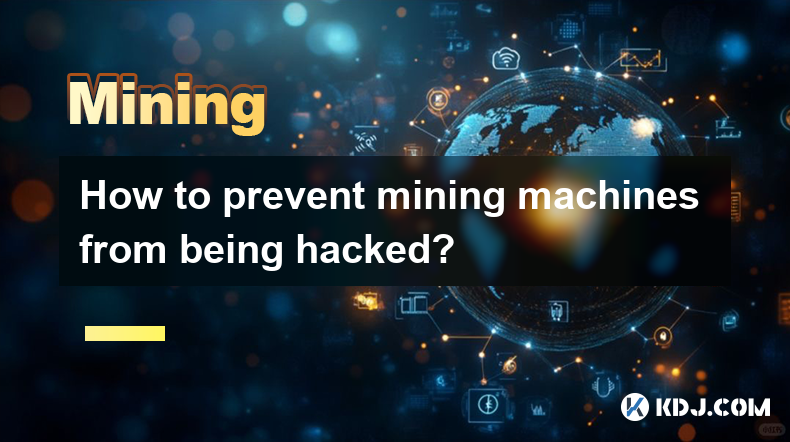
How to prevent mining machines from being hacked?
Apr 08,2025 at 09:00pm
In the world of cryptocurrency, mining machines play a crucial role in securing networks and validating transactions. However, these machines are also prime targets for hackers looking to exploit vulnerabilities for financial gain. Preventing mining machines from being hacked requires a multi-faceted approach that includes robust security measures, regu...
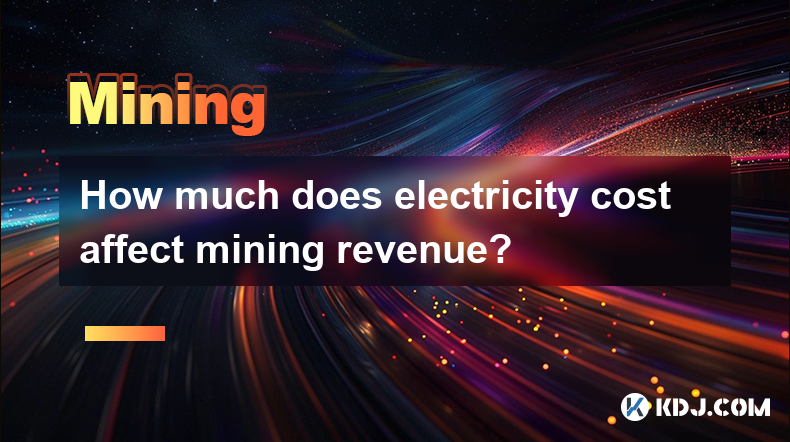
How much does electricity cost affect mining revenue?
Apr 08,2025 at 05:29pm
The cost of electricity plays a crucial role in determining the profitability of cryptocurrency mining. Mining revenue is directly impacted by the expenses incurred in running mining equipment, with electricity costs often being the most significant operational expense. Understanding how electricity costs affect mining revenue is essential for miners lo...
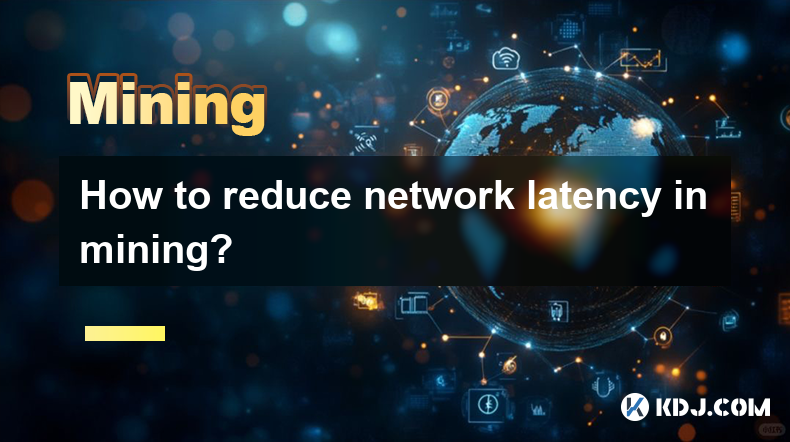
How to reduce network latency in mining?
Apr 09,2025 at 02:28am
Understanding Network Latency in MiningNetwork latency is a critical factor in the world of cryptocurrency mining. It refers to the time it takes for data to travel from its source to its destination across a network. In mining, lower latency can mean the difference between successfully adding a block to the blockchain and missing out on the reward. Red...

What is hashrate fluctuation?
Apr 08,2025 at 08:08pm
Hashrate fluctuation refers to the changes in the total computational power used by miners to process transactions and secure the blockchain network. This metric is crucial in the cryptocurrency world, particularly for networks like Bitcoin, Ethereum, and others that rely on proof-of-work (PoW) consensus mechanisms. Understanding hashrate fluctuation is...

Why does mining require a full node?
Apr 08,2025 at 06:49pm
Mining in the cryptocurrency world is a complex process that involves verifying transactions and adding them to the blockchain. One of the key components required for mining is a full node. But why is a full node necessary for mining? Let's delve into the reasons and explore the intricacies of this requirement. What is a Full Node?A full node is a progr...
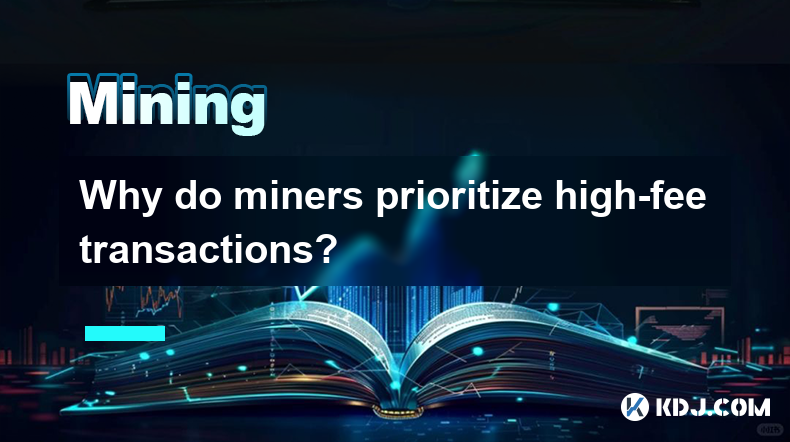
Why do miners prioritize high-fee transactions?
Apr 08,2025 at 05:01pm
Miners in the cryptocurrency ecosystem, particularly in networks like Bitcoin, play a crucial role in validating and adding transactions to the blockchain. One of the key factors that influence their decision-making process is the transaction fee associated with each transaction. Miners prioritize high-fee transactions primarily because these fees direc...

How to prevent mining machines from being hacked?
Apr 08,2025 at 09:00pm
In the world of cryptocurrency, mining machines play a crucial role in securing networks and validating transactions. However, these machines are also prime targets for hackers looking to exploit vulnerabilities for financial gain. Preventing mining machines from being hacked requires a multi-faceted approach that includes robust security measures, regu...

How much does electricity cost affect mining revenue?
Apr 08,2025 at 05:29pm
The cost of electricity plays a crucial role in determining the profitability of cryptocurrency mining. Mining revenue is directly impacted by the expenses incurred in running mining equipment, with electricity costs often being the most significant operational expense. Understanding how electricity costs affect mining revenue is essential for miners lo...

How to reduce network latency in mining?
Apr 09,2025 at 02:28am
Understanding Network Latency in MiningNetwork latency is a critical factor in the world of cryptocurrency mining. It refers to the time it takes for data to travel from its source to its destination across a network. In mining, lower latency can mean the difference between successfully adding a block to the blockchain and missing out on the reward. Red...

What is hashrate fluctuation?
Apr 08,2025 at 08:08pm
Hashrate fluctuation refers to the changes in the total computational power used by miners to process transactions and secure the blockchain network. This metric is crucial in the cryptocurrency world, particularly for networks like Bitcoin, Ethereum, and others that rely on proof-of-work (PoW) consensus mechanisms. Understanding hashrate fluctuation is...

Why does mining require a full node?
Apr 08,2025 at 06:49pm
Mining in the cryptocurrency world is a complex process that involves verifying transactions and adding them to the blockchain. One of the key components required for mining is a full node. But why is a full node necessary for mining? Let's delve into the reasons and explore the intricacies of this requirement. What is a Full Node?A full node is a progr...

Why do miners prioritize high-fee transactions?
Apr 08,2025 at 05:01pm
Miners in the cryptocurrency ecosystem, particularly in networks like Bitcoin, play a crucial role in validating and adding transactions to the blockchain. One of the key factors that influence their decision-making process is the transaction fee associated with each transaction. Miners prioritize high-fee transactions primarily because these fees direc...
See all articles






















































































